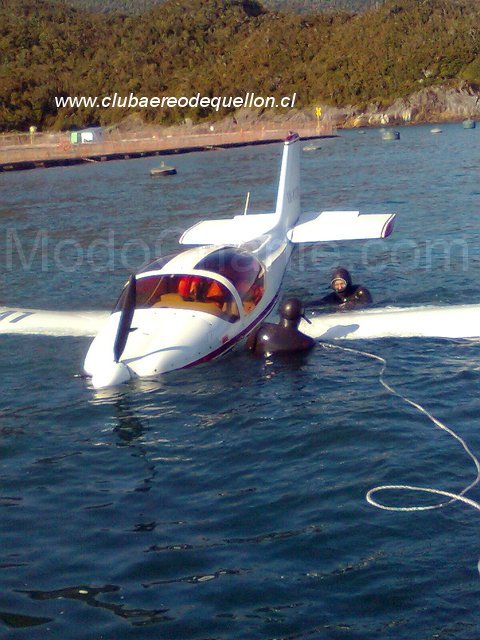The constant wear ones are the ones to have comfortable and not cumbersome. As in Switlik brand. Plus it doesnt scare everybody.
huv wrote:
Not so much a presumption as an anticipation, I would guess. A vest needs to be stored and used carefully to last, and it would definitely not last 10 years without maintenance in a busy rental plane. But packed as resembling a can of baked beans more than a piece of emergency equipment it would easily last 10 years without a wrinkle.
It may also just be that we have an odd culture about this here. But again, there is no EASA requirement that a vest is approved. However, it is in Danish regulations that it has to be. Until this August, when Part-NCO will take over here too.
If the price for this is an inspection every year rather than every 10 years (I don’t know if Swedish regs would allow 10 year-inspections for “packed” vests, but for the sake of argument…) then that’s a price I’m happy to pay.
Being based in Denmark it does make sense to keep vests in the plane at all time, as you cannot legally fly IFR without a vest for every seat, and for VFR it would impose restrictions to even local flights as you are required by (Danish!) law to maintain gliding altitude to land at all times without vests.
The price I am happily paying is to keep a set of non-approved, ready to use vests in the plane, and carry it when appropriate. The approved vests are just ballast to make the plane airworthy and therefore it is not unreasonable to chose the cheapest way, given the somewhat silly Danish law on this.
I do not see substantial disagreement on the subject. It is difficult to put on a vest once in flight (before dublinpilot’s report I would have said impossible), and it makes sense to carry vests whenever the planned flight take you beyond gliding distance to land.
However, around the world, some single engine flying is performed under conditions where an engine failure is Not Good. Remote areas, some mountain areas, night flight, IFR with low ceilings and winter over-water flights are some. The extra risk in these activities are probably smaller than the general risk due to bad fuel management, but every pilot can choose which of those risks he will accept. I know a pilot who carries a vest when flying across water in winter time, because, as he says, he considers freezing to death less unpleasant than drowning.
I had this in mind

Since this Europa was floating for quite a few hours after ditching (the guys on the picture were not the crew  ) I would guess, it should be possible to put on the life vests, sitting/standing on the wings/fuselage.
) I would guess, it should be possible to put on the life vests, sitting/standing on the wings/fuselage.
For every one that floats for hours, there are countless more than sink within minutes.
the guys on the picture were not the crew
Are you sure?
There are some very diligent readers of the UK CAA Safety Sense leaflet on ditching who wear those outfits to Le Touquet. They are recognisable by wearing yellow jackets in the restaurants  Rubber is rather a 1970s thing (or was that Latex?) but the CAA here is very conservative and one has to applaud that moderating attitude…
Rubber is rather a 1970s thing (or was that Latex?) but the CAA here is very conservative and one has to applaud that moderating attitude…
But seriously, I think a typical unpressurised SEP will float for only 1-2 mins after a perfectly executed ditching, because water gets in past the pedals. But maybe most of the water gets in via the door openings, so a plane with a higher sill (the bottom edge of the door, in effect) should be better. I know the internals of mine pretty well and the holes around the pedals don’t lead anywhere near the front. Assuming the back end sticks right out (the usual mode, due to the engine weight) water would have to get in via the landing gear wells.
Fairly obviously most (of the few) ditching videos show the most common GA types and these (Cessnas and PA28s) don’t have particularly high sills. That in turn makes them (especially Cessnas) much easier to get in and out of, especially for a large / inflexible person.
However a wooden plane with empty tanks might float indefinitely  Probably not a great outcome since it will be fairly obvious why you ditched and you will get hammered on facebook
Probably not a great outcome since it will be fairly obvious why you ditched and you will get hammered on facebook 
From what I have read and heard, in most instances the aircraft will sink within minutes and pilots doing a course on how to survive such a ditch all tell me that you have no way to put on your lifevest once in the aircraft is in the water. So … I would assume it only makes sense to put on the life-vest before departure of a flying trip that includes a lot of water. In the winter time I prefer to even put on a survival suit in addition to the life-vest. In the twin, I tend to rely on the second engine for the water crossing part (depending on some other variables) and will not put on the survival suit but still will put on the life-vest.
dublinpilot wrote:
For every one that floats for hours, there are countless more than sink within minutes.
Perhaps, but thanks to the work of a dead Greek mathematician, we can calculate which it’s going to be…
Jacko wrote:
we can calculate which it’s going to be…
Or just try – for the Europa the proof is provided 
Empty fuel tanks most likely…